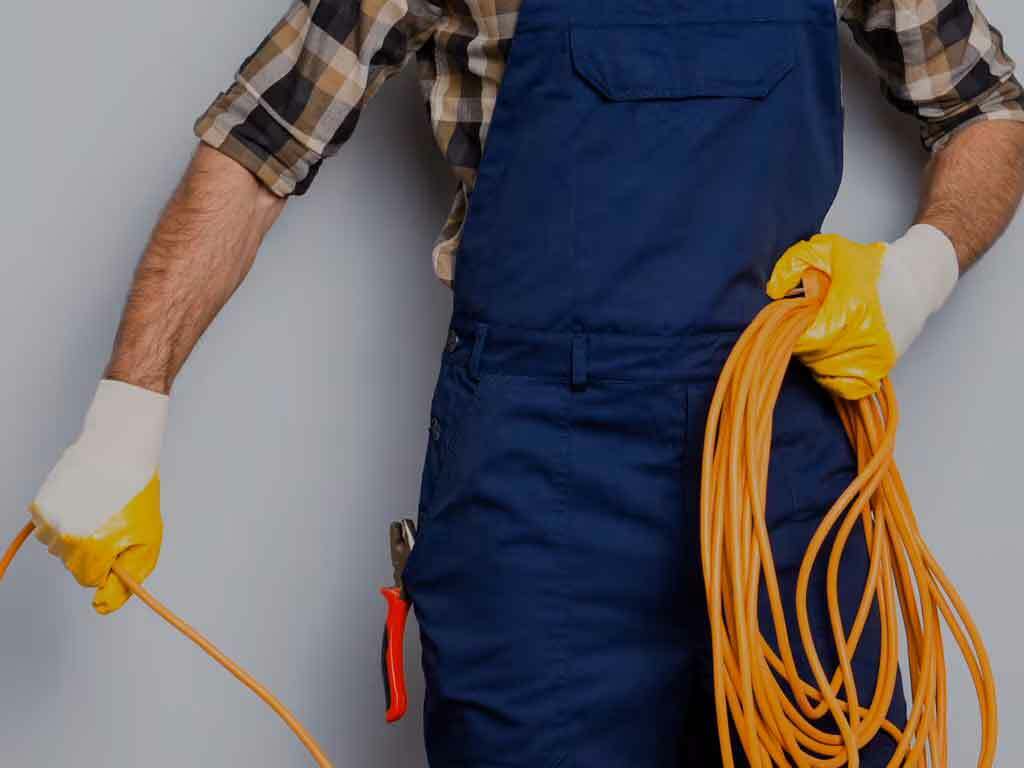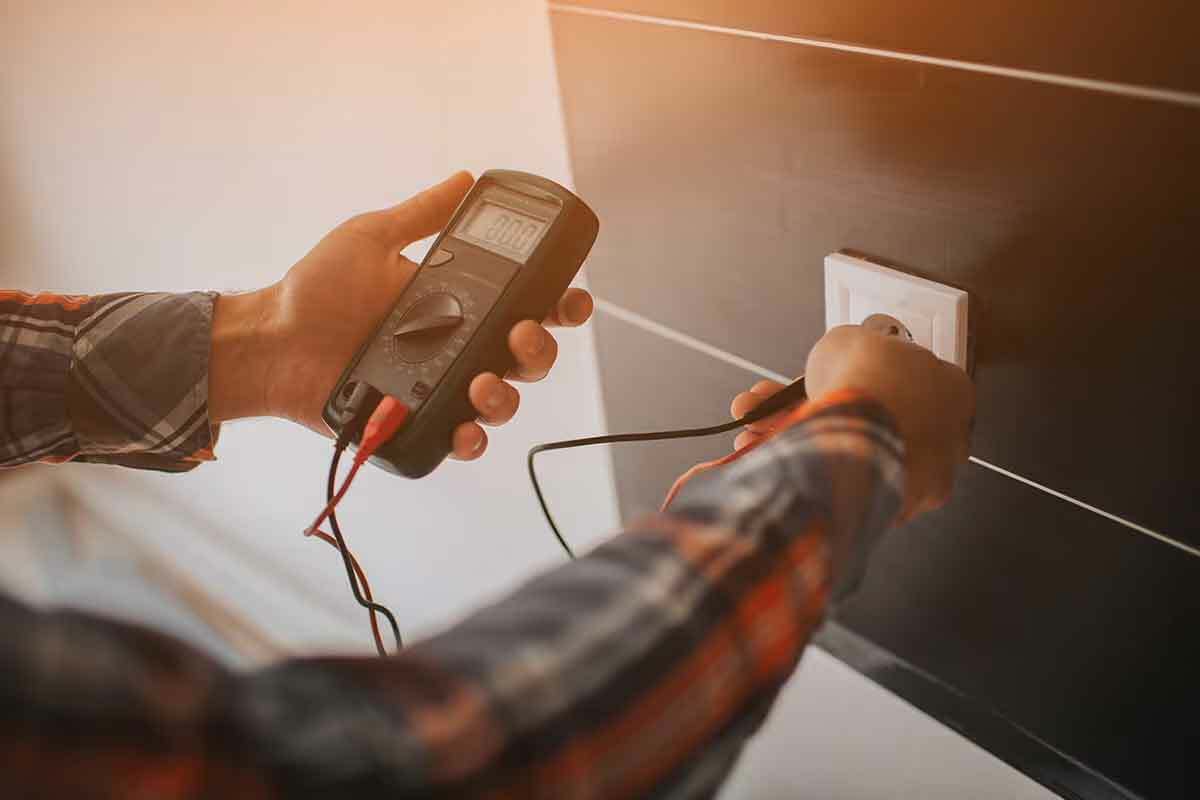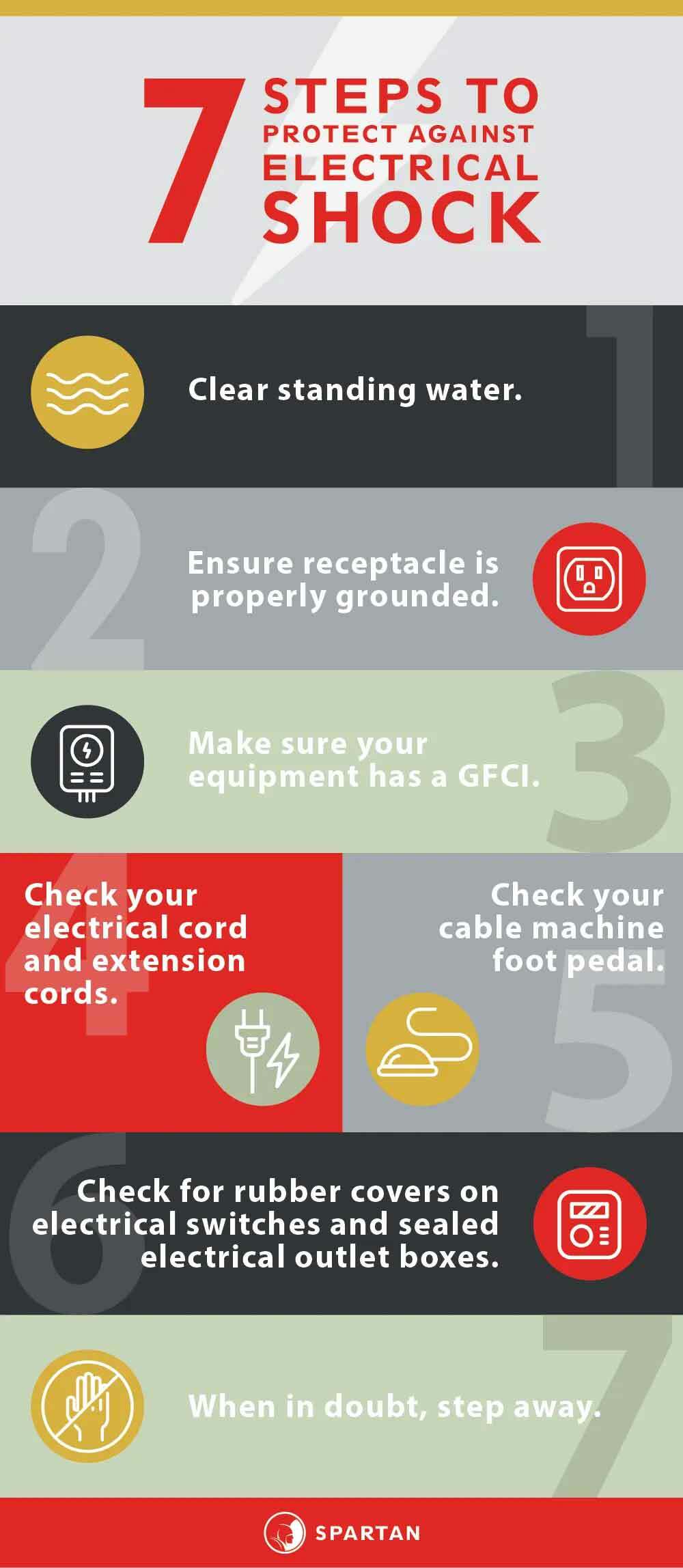The possibility of electrical shock should always be a concern when a drain and sewer cleaner operates a machine. Electricity and standing water is a dangerous combination.
Danger is always present when using electrical equipment in an environment with water exposure potential. Follow these safety precautions to minimize the risk of electrical shock.
Safety Precautions
1. Clear Standing Water
The first step is to clear any standing water, and make sure the operating area is as dry as possible. Do not operate electrical machinery in water.

2. Ensure receptacle is properly grounded
A properly grounded receptacle minimizes the risk of shock. Don’t assume that all three-hole adapters are properly grounded. The best defense against shock from faulty wiring is an electrical tester. Before plugging in your machine, a quick check with one of these relatively inexpensive devices will let you know if an outlet is bad. Always test outlets in homes and buildings over 50 years old, especially those that are still two-prong. This will save your equipment from serious damage, but—most importantly—it might just save your life.

3. Make sure your equipment has a Ground Fault Current Interrupter
All modern drain cleaning machines come equipped with Ground Fault Current Interrupters or GFCIs (also known as GFIs) incorporated into their electric cords. Never operate a drain cleaning machine without a working GFCI; it is your primary defense against electrocution.
- The GFCI requires a working ground function in the electrical circuit. Without a working ground, you run the risk of the machine conducting electrical current.
- The GFCI “test” button allows the operator to make certain that the GFCI is working properly. Test the unit every time you plug it into the wall. It only takes a second, but that second could save your life.
- If the GFCI unit on the power cord is tripping when you use the machine, the issue is with the electrical system you are plugging into – either the outlet is bad, the building’s wiring does not have a ground circuit properly connected, or there is a problem with the breaker. Address the problem with the electrical system; never cut off or otherwise disable the GFCI.
4. Check your electrical cord and extension cords

If the power cord on your drain cleaning machine is not long enough, you will have to use an extension cord. Inspect your extension cord before each use. Is your cord frayed, severely twisted or cut? If so, spend the money and replace it.
If the extension cord is in good condition, the next step is to check that it is heavy-duty enough to handle the current flowing through it without burdening the machine. As a general rule, your extension cord needs to be at least the same diameter or gauge as the power cord on your drain cleaning machine. If your extension cord is too light, you run the risk of starving the machine for current, causing it to operate too slowly or too hot. Extension cords longer than 25 feet should be heavier gauge than the cord they are powering to avoid a decrease in power.
5. Check your cable machine foot pedal
Manufacturers of drain cleaning machinery have stopped using electrically-activated foot pedals for controlling the machine. They now use pneumatic or air-operated pedals, which reduce the risk of electrical current coming in contact with water. If your machine has an electric foot pedal, change it out immediately. (Electric foot pedals have a wire that feeds directly into them, rather than an air hose.) Manufacturers offer conversion kits to change electric foot pedals to air foot pedals. Converting your electric foot pedal is time and money well spent – think of it an investment in your future.
6. Check for rubber covers on electrical switches and sealed electrical outlet boxes
Rubber covers help keep water away from the electrical components on the machine. Look for sealed electrical outlet boxes for the same reason. A motor shroud or sealed motor is ideal if the machine is used outdoors or in areas where moisture is a problem. Remember, the idea is to keep electricity and water from coming in contact with one another.
7. When in doubt, step away
What if you have taken all safety precautions yet receive a shock when you touch the machine? Even if it is only the lightest tingle, immediately take that machine out of service and keep it out of service until the cause of the shock is determined and repaired. (We suggest looking at the on/off switch on the machine to make certain it is wired correctly.)
Stay safe and reduce the risk of electrical shock by referring to this quick reminder of the safety precautions.
 US Dollars
US Dollars

